
Our Emission Pledge
We firmly believe that our conferences play a crucial role in advancing the sustainable development of the macroalgae and microalgae industries and recognizing algae's potential as a significant crop for carbon sequestration and its positive impact on combating climate change. In addition, we are organizing trade shows in the agricultural sector to improve the sustainable development of the agriculture industry. However, it doesn't take away the fact that organizing a conference or trade show will always cause CO₂ emissions in the short term. Therefore, we would like to take responsibility for the CO₂ emissions resulting from organizing our conferences and trade shows.*
How are we taking responsibility for our emissions?
We have decided to make a voluntary contribution to the financing of specific CO₂-reducing forestry projects in Germany for the climate and environmental impact caused by the event, travel and participation. For every event, based on the number of participants, we will plant one tree within the selected forest conversion measures conducted by the non-profit organization WeReforest e.V.. Our aim is to support more of these initiatives in the near future to take responsibility for our emissions.
Why did we choose this project?
DLG Markets Benelux is part of the DLG Group (German Agricultural Society) which is a non-profit organization based in Germany. One of its key objectives is to promote international agricultural knowledge across nations, and the society organizes a range of agricultural exhibitions throughout the world.
The non-profit organization WeReforest e.V. was started by DLG and is their heart's project and their way to get involved for really more sustainability. Based on their professional experience in helping to organize leading international trade fairs and major events, they are aware that each event, as well as the travel of visitors to and from each event, causes significant climate-damaging emissions. In view of the fact that the German forest is in crisis, forest managers are facing enormous challenges. Therefore, WeForest would like to make a lasting contribution to the climate-stable conversion and reconstruction of the forests in Germany through concrete projects.
We have chosen that project as we know for sure that our donations are meaningful. All donations made to the non-profit WeReforest e.V. will be used economically and efficiently for the selected forest conversion measures.
*This does not mean we are claiming carbon neutrality.
WeReforest e.V.
WeReforest e.V. supports forest owners in the transformation and establishment of climate-resilient, sustainable mixed forests composed of native deciduous and coniferous trees.
Dedicated donations are used to create climate-adapted, structurally diverse, multi-layered, and ecologically valuable commercial forests using native tree species with consistently high growth and utilization potential, resulting in substantial CO₂ reduction capacity.
Through the implementation of expert reforestation, reforestation projects in areas affected by calamities, and forest transformation measures on woodland areas in Germany, WeReforest makes a positive contribution to climate protection, sustainable wood supply, and biodiversity conservation.
Reforestation is carried out locally, transparently, and traceably in Germany.
Forestry facts
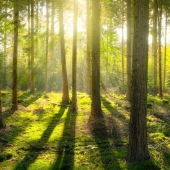
Forest, the green heart
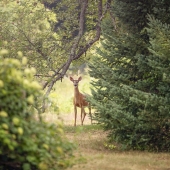
Forest is a home
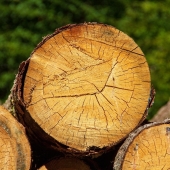
Useful function of our forests
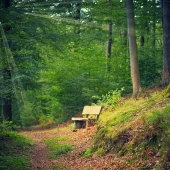
Recovery function of our forests
Forest offers rest, relaxation and a favorable climate for those seeking relaxation. The forest air is demonstrably healthy and the forest is used intensively for exercise and sporty activities.

Protective functions of our forests
Soil protection
Forest prevents soil erosion by water and wind.
Avalanche protection
Forests can prevent avalanches and mudslides from forming and slow down smaller avalanches.
Water protection
One square meter of forest floor stores up to 200 liters of water. Meltwater and rainwater seep away slowly and become clean groundwater thanks to the good filtering capacity of the soil.
Climate protection
Forests are the largest terrestrial store of carbon. In addition to the oceans, forests are among the current carbon sinks. Trees absorb the greenhouse gas carbon dioxide directly from the air for their growth and store the carbon in their wood. However, our forests are only a CO2 sink if they record an overall net increase in biomass production. This is achieved through sustainable use and use of wood in durable products.
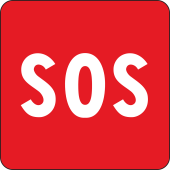
Our forest is in need!
Ultimately, reducing emissions is much better than offsetting and so, where possible, we are working to reduce our CO₂ emissions. This includes, but is not limited to:
Sustainable Catering: We collaborate with a caterer that places a strong emphasis on locally sourced, organic, and sustainably produced food, reducing the carbon footprint associated with our event's meals.
Eco-Friendly Materials: We make conscientious choices by utilizing recycled materials onsite and sourcing from local suppliers whenever possible, reducing transportation-related emissions and promoting sustainable production practices.
Digital Transformation: We've embraced a digital-first approach, significantly reducing our reliance on printed materials. This shift not only conserves resources but also minimizes emissions linked to paper production, printing, and distribution
We firmly believe that when every individual actively contributes to these efforts, we harness the collective power needed to achieve substantial reductions in emissions. Each small step, whether it's choosing sustainable catering, opting for eco-friendly materials, or going digital, adds up to make a significant positive impact on our environment. Together, we can lead by example and inspire change for a greener, more sustainable future.


